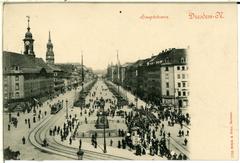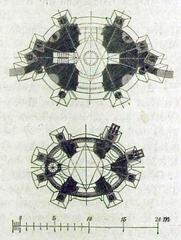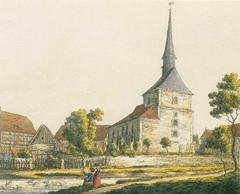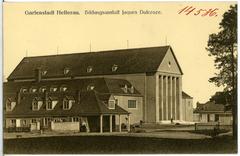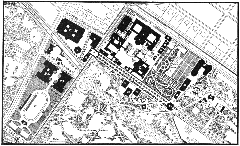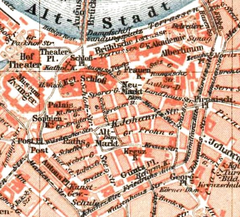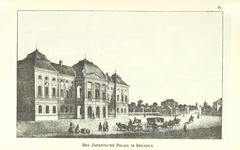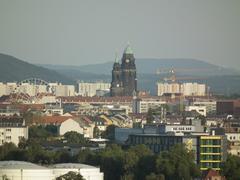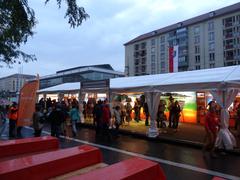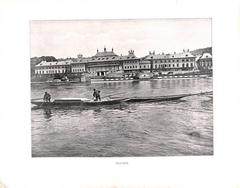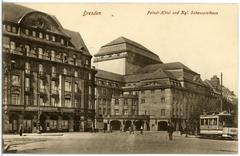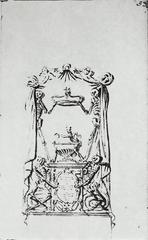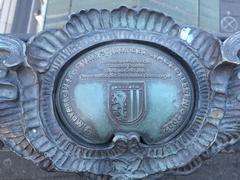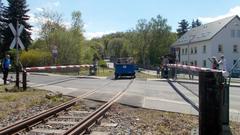
Gedenkstätte Bautzner Straße Dresden: Visiting Hours, Tickets, and Historical Significance
Date: 04/07/2025
Introduction
The Gedenkstätte Bautzner Straße Dresden stands as a powerful reminder of the political repression endured by thousands during the Soviet occupation and East German Stasi era. Located in Dresden’s Neustadt district, this authentic former Stasi remand prison is the only original facility of its kind in Saxony open to the public. Visitors can explore preserved prison cells, interrogation rooms, and administrative offices—spaces once central to the practices of surveillance, psychological torture, and state control. The memorial not only documents the harsh realities faced by political prisoners and dissidents but also commemorates the courage of Dresden citizens during the Peaceful Revolution of 1989, when the site was peacefully occupied and the Stasi’s operations ended.
This guide provides a detailed overview of the memorial’s history, visiting hours, ticketing, accessibility, and what to expect during your visit. For comprehensive visitor details and the latest updates, please consult the official Bautzner Straße Memorial website and Wikipedia.
Historical Background
Origins and Early Use
The site’s history mirrors the tumultuous political shifts of 20th-century Germany. Originally built as a paper and cardboard factory in 1882, it was converted into the “Heidehof” residential building in 1932. Following World War II, the Soviet secret service (MGB/KGB) repurposed the cellars as detention and interrogation facilities for alleged Nazi collaborators and political opponents. By 1949, after repairs from wartime bomb damage, the site functioned as a remand prison (Wikipedia; Evendo).
The Stasi Era (1953–1989)
In 1953, the East German Ministry for State Security (Stasi) took over, expanding the complex into the District Administration headquarters for Dresden. The main prison, administrative offices, and interrogation rooms became instruments of political repression. The Soviet detention cellar, in use until 1952, remains accessible today as part of the memorial (Bautzner Straße Memorial).
During this period, thousands were detained and interrogated—many for attempting to flee the GDR or opposing the regime. The prison’s environment was intentionally harsh, aiming to break detainees’ will (Dark Tourism).
The Peaceful Revolution of 1989
Gedenkstätte Bautzner Straße Dresden played a pivotal role during the Peaceful Revolution. On December 5, 1989, citizens peacefully occupied the Stasi complex, marking the end of the Stasi’s operations in Dresden. This act was emblematic of the broader democratic movement that led to the fall of the Berlin Wall (Bautzner Straße Memorial).
Post-Reunification: Memorialization
Recognizing its significance, the main prison building was placed under historic preservation in 1994. The non-profit “Erkenntnis durch Erinnerung e.V.” was established in 1997 to oversee the memorial’s development. The site opened to the public in stages, with major renovations completed by 2008, including new exhibition spaces and educational facilities (Wikipedia).
Architectural and Urban Context
Located at Bautzner Straße 112a, the memorial sits on the edge of Dresden’s Neustadt and Loschwitz districts, close to the Elbe River and Waldschlößchen Bridge. The contrast between the site’s grim history and its scenic surroundings adds depth to the visitor experience (Wikipedia).
Legacy
The memorial stands as a lasting witness to political repression and as a center for education and civic engagement. It preserves the stories of those who suffered and fosters dialogue on the fragility of democracy and the importance of human rights (Evendo; Documenta).
Visitor Information
Address and Getting There
- Location: Bautzner Straße 112a, 01099 Dresden, Germany.
- By tram: Lines 3, 7, or 12 stop nearby.
- By train: Dresden Neustadt station is about a 15-minute walk.
- By car: Limited parking available; public transport recommended.
Opening Hours
- Daily: 10:00 a.m. – 6:00 p.m.
- Closed: Some public holidays (check the official website for updates).
Tickets and Entry Fees
- General Admission: €6 (adults)
- Reductions: Seniors, students, groups
- Children/Youth under 18: Free
- Free Admission: On the last Sunday of each month; Wednesdays from 4:00 p.m.
- Guided Tours: Additional fee (typically €3–8); advance booking recommended.
Accessibility
- The memorial is wheelchair accessible in main areas, with elevators and accessible restrooms. Some historic sections may have limited access; contact ahead for assistance.
Facilities
- Visitor center, restrooms, small bookstore, and complimentary parking.
What to See and Experience
Soviet Basement Prison (“Fuchsbau”)
Begin your visit in the stark Soviet basement prison, with preserved cells, communal washrooms, and a solitary confinement cell. Informational panels and personal stories recount the experiences of those detained here (vonortzuort.reisen).
Stasi Remand Prison
Explore the multi-story remand prison, its cells and interrogation rooms maintained in their original state. Exhibits feature personal accounts, documents, and artifacts that convey the intense psychological pressures of incarceration (vonortzuort.reisen).
Stasi Administration Offices
On the upper floor, see the preserved offices of Dresden’s last Stasi chief and the “Festsaal,” complete with period furnishings. Exhibits detail the Stasi’s organizational structure and surveillance practices (sachsen-tourismus.de).
Exhibitions and Interpretive Materials
- Exhibits in German with English translations for key displays.
- Audio guides (including survivor testimonies) available.
- Virtual tour accessible via the official website.
Guided Tours and Special Programs
- Public Tours: Mondays at 14:00 (€3 + entry fee); first Sunday of the month at 11:00 (entry only).
- Thematic Tours: Focus on the Peaceful Revolution and Stasi history (seasonal).
- Educational Workshops: For students and groups.
Special Exhibitions and Events
Rotating exhibitions and annual events, such as lectures and commemorative ceremonies, offer deeper exploration of political repression and resistance. Open days on the anniversary of the 1989 Revolution feature eyewitness talks and community discussions.
Nearby Dresden Historical Sites
Combine your visit with other key sites:
- Dresden Neustadt’s cultural scene
- Frauenkirche
- Dresden Castle
- Military History Museum
- The Dresden Revolutionary Path 1989 city tour
Frequently Asked Questions (FAQ)
Q: What are the visiting hours?
A: Daily, 10:00–18:00; closed on some public holidays.
Q: How do I purchase tickets?
A: Tickets are sold onsite; guided tours require advance booking.
Q: Is the memorial accessible?
A: Yes, main areas are wheelchair accessible.
Q: Are guided tours available in English?
A: Some tours and audio guides are available in English; check availability when booking.
Q: Can children visit the memorial?
A: Yes; educational programs are available for school groups.
Q: Is photography allowed?
A: Photography is restricted in some areas to preserve the memorial’s solemnity.
Tips for a Meaningful Visit
- Plan ahead: Consult the official website for current hours and event schedules.
- Language support: Use audio guides or join English-language tours if needed.
- Pace yourself: The exhibits are emotionally intense.
- Combine with other sites: Explore Dresden’s history more fully by visiting nearby attractions.
Conclusion
The Gedenkstätte Bautzner Straße Dresden offers an authentic and deeply moving journey through Germany’s recent past. Its preserved spaces, powerful exhibitions, and educational programs provide critical insights into the legacy of totalitarian regimes and the triumph of democratic resistance. Whether you are a history enthusiast, advocate for human rights, or a curious traveler, this memorial is a vital stop for understanding Dresden’s—and Germany’s—complex 20th-century history.
For the most current information on visiting hours, tickets, guided tours, and special programs, visit the official memorial website. Enhance your experience with the Audiala app, and follow the memorial’s social media for updates and event news.
Explore. Reflect. Remember.
Sources and Further Reading
- Gedenkstätte Bautzner Straße Dresden Wikipedia
- Bautzner Straße Memorial official website
- Stasihaft Dresden – Der historische Ort
- Dark Tourism: Bautzner Straße Former Stasi Prison Memorial Dresden
- Evendo: Memorial Bautzner Street Dresden
- Sachsen Tourismus: Gedenkstätte Bautzner Straße Dresden
- Documenta: Desk Research - Memorial Dresden
- Intravel.net: Gedenkstätte Bautzner Straße Dresden
- vonortzuort.reisen: Gedenkstätte Bautzner Straße Dresden





